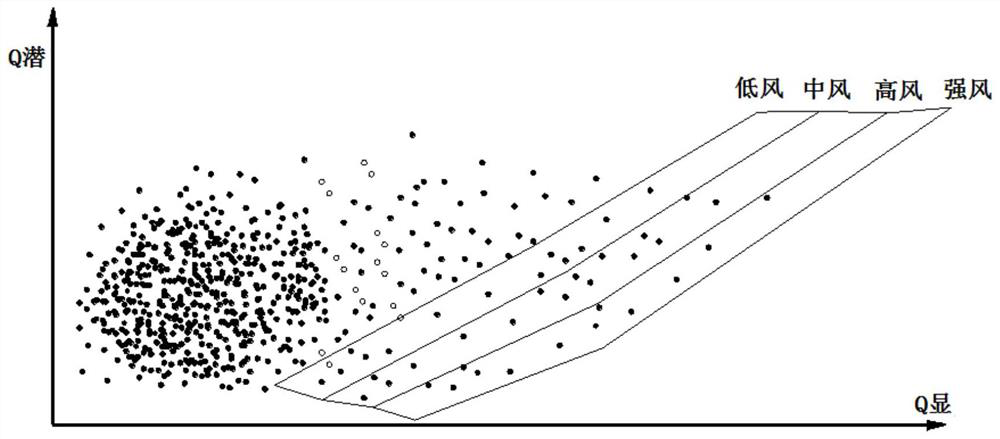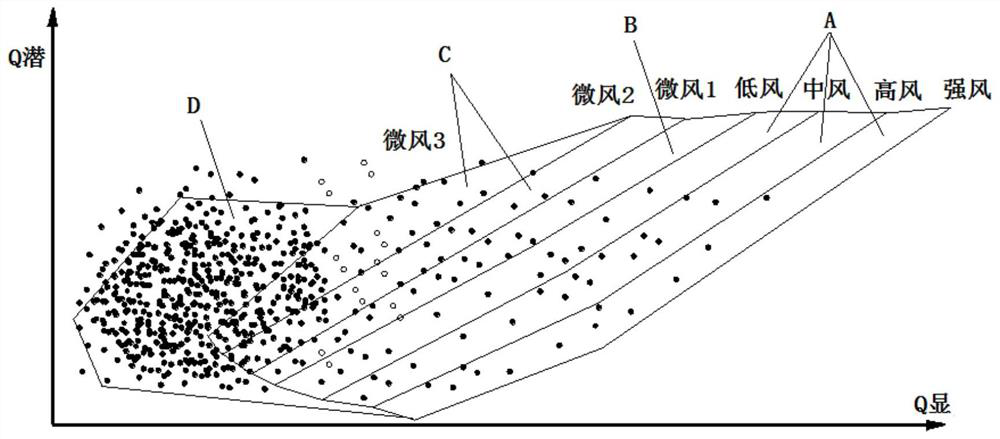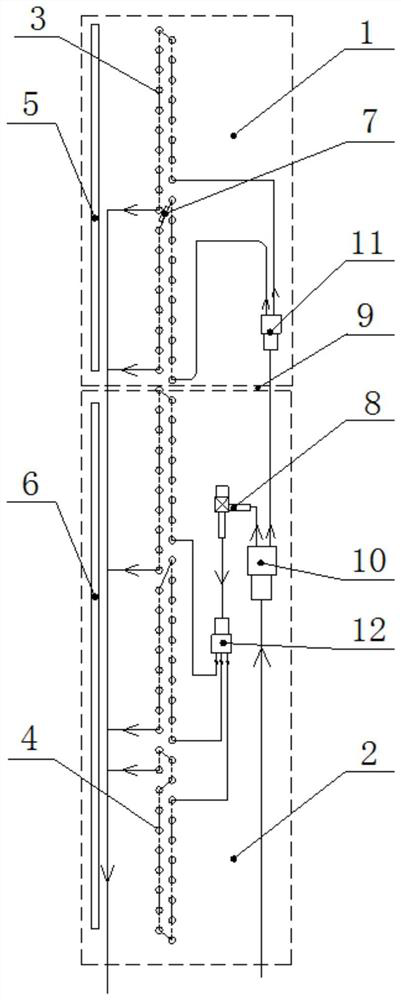A dual-duct air conditioner and its dehumidification method and system
A dual-duct, air-conditioning technology, applied in air-conditioning systems, heating and ventilation control systems, heating and ventilation safety systems, etc., can solve the problems of small air-conditioning cooling and dehumidification requirements, reduced energy efficiency, and zero latent heat capacity of air-conditioning
- Summary
- Abstract
- Description
- Claims
- Application Information
AI Technical Summary
Problems solved by technology
Method used
Image
Examples
example 1
[0059] When the air conditioner is running with automatic wind speed or dehumidification, the indoor ambient temperature Tin is 25.5°C, the indoor relative humidity φ is 92%, the target temperature Ts is 25°C, and the target relative humidity φs is 50% (if the target relative humidity cannot be set, The default is 65%), ΔR=10rpm, T1=10°C, T2=5°C, E1=0.5°C, E2=-1.0°C, the minimum reliable operating speed of the indoor fan of the air conditioner is 100rpm. At this time, the target temperature difference E=Tin-Ts=25.5°C-25°C=0.5°C≤0.5°C (E1), φ=92%>70% (φ1), which meets the definition of ultra-low sensible heat and high latent heat load area, and the air conditioner enters Dehumidification mode for ultra-low sensible heat and high latent heat load area.
[0060] Indoor unit: The upper fan takes the low wind gear as the initial speed, such as low wind 800rpm. The lower fan operates at a low wind speed, the solenoid valve 8 on the lower evaporator 4 is closed, and the refrigerant ...
example 2
[0064] When the air conditioner is running with automatic wind speed or dehumidification, the indoor ambient temperature Tin is 25.5°C, the indoor relative humidity φ is 85%, the target temperature Ts is 25°C, and the target relative humidity φs is 60% (if the relative humidity cannot be set, then Default 65%), ΔR=10rpm, T1=10°C, T2=5°C, E1=0.5°C, E2=-1.0°C, the minimum reliable operating speed of the air-conditioning indoor motor is 100rpm. At this time, the target temperature difference E = Tin - Ts = 25.5°C - 25°C = 0.5°C ≤ 0.5°C (E1), φ - φs = 85% - 60% > 10% (φ2), in line with the ultra-low sensible heat and high latent heat load area If defined, the air conditioner enters the dehumidification mode in the low sensible heat and high latent heat load area.
[0065] Indoor unit: The upper fan takes the low wind gear as the initial speed, such as low wind 800rpm. The lower fan stops, the solenoid valve 8 on the lower evaporator 4 closes, the refrigerant cannot pass through t...
PUM
 Login to View More
Login to View More Abstract
Description
Claims
Application Information
 Login to View More
Login to View More - R&D
- Intellectual Property
- Life Sciences
- Materials
- Tech Scout
- Unparalleled Data Quality
- Higher Quality Content
- 60% Fewer Hallucinations
Browse by: Latest US Patents, China's latest patents, Technical Efficacy Thesaurus, Application Domain, Technology Topic, Popular Technical Reports.
© 2025 PatSnap. All rights reserved.Legal|Privacy policy|Modern Slavery Act Transparency Statement|Sitemap|About US| Contact US: help@patsnap.com



